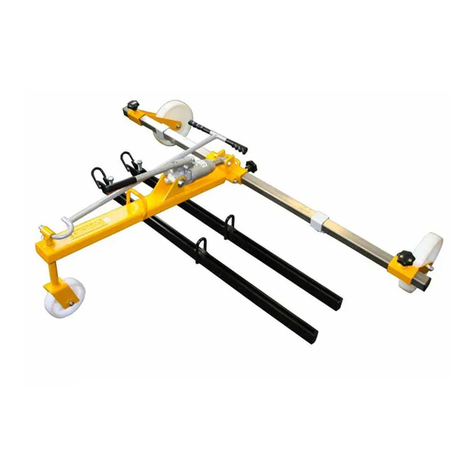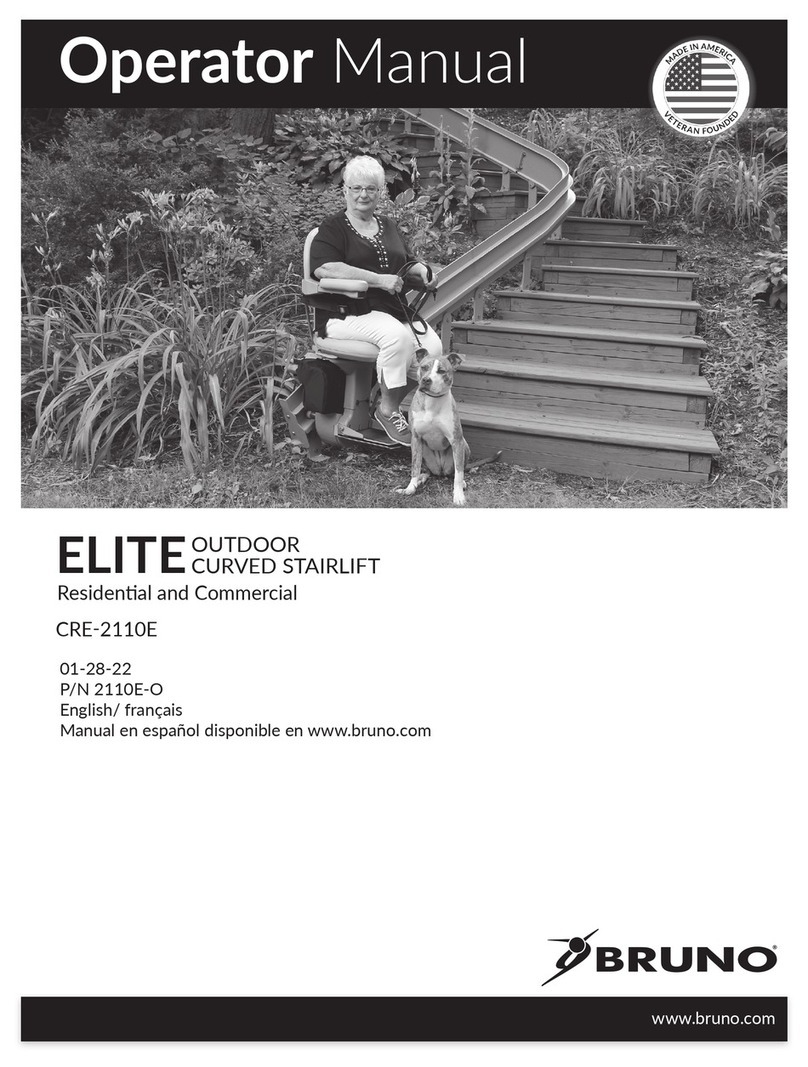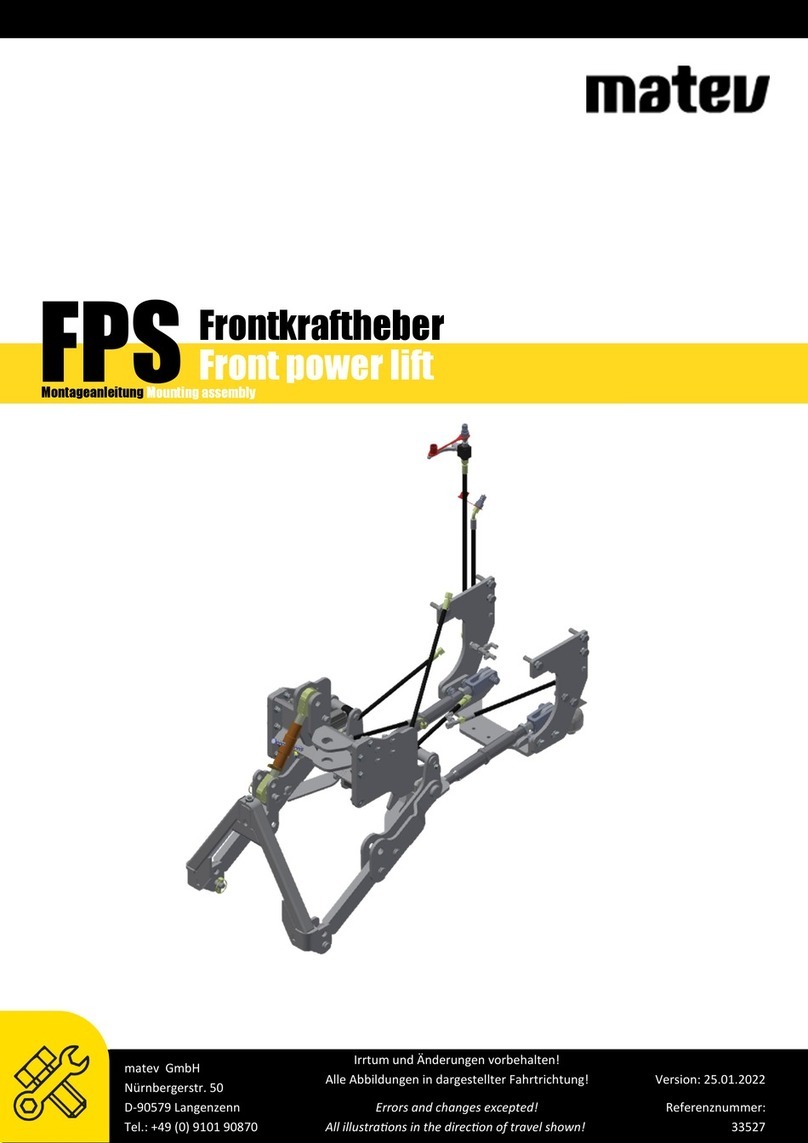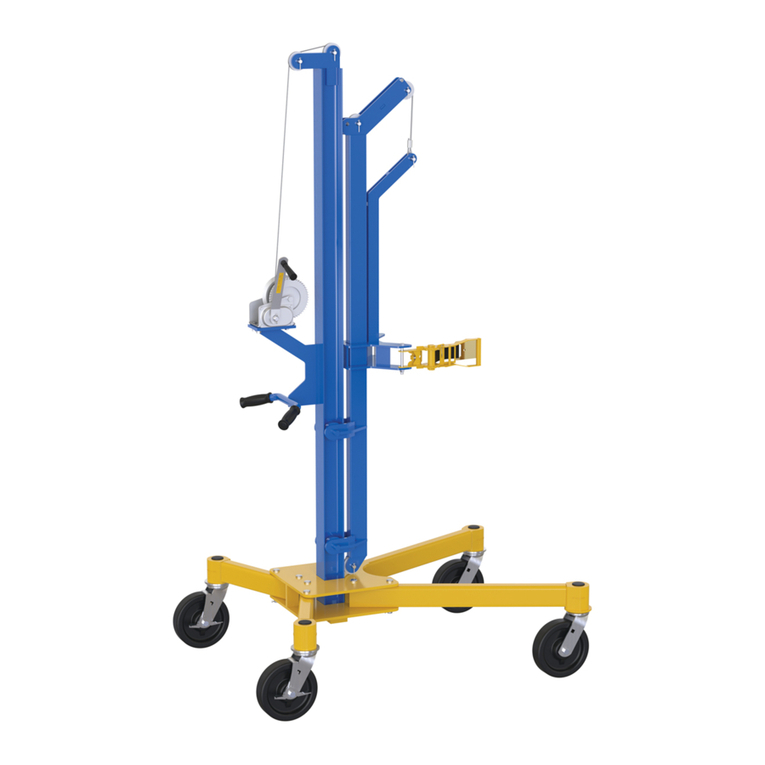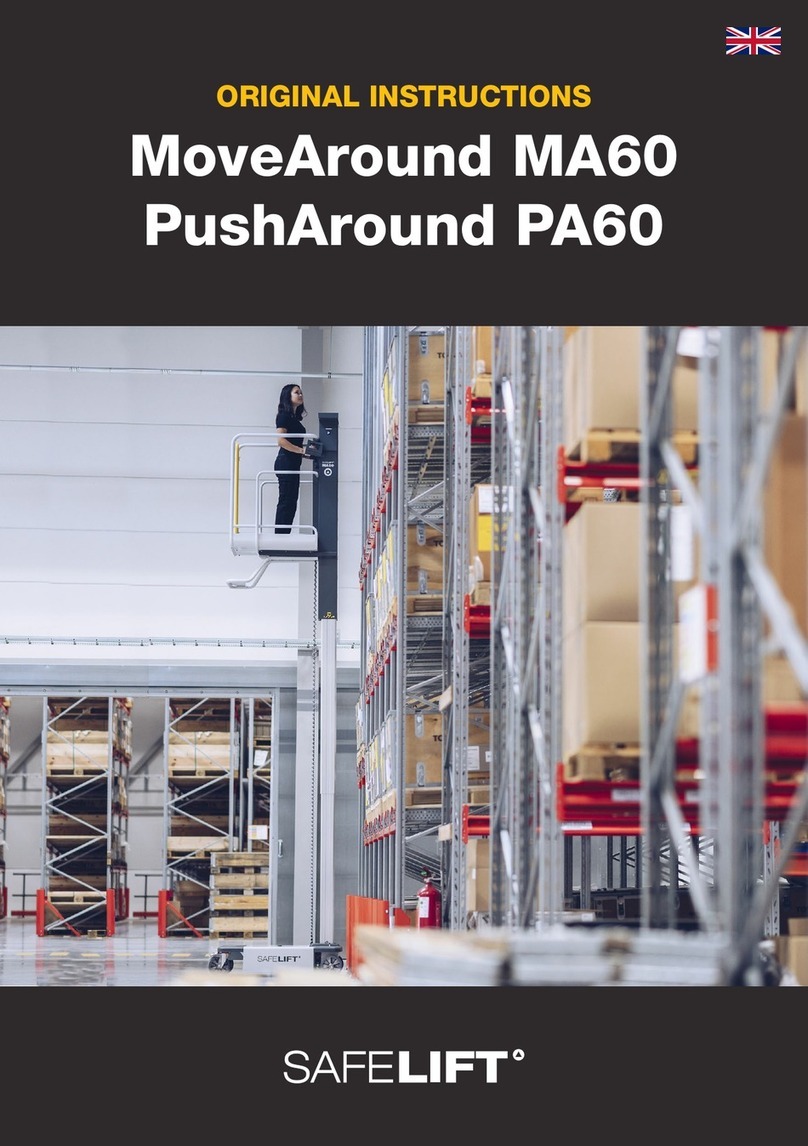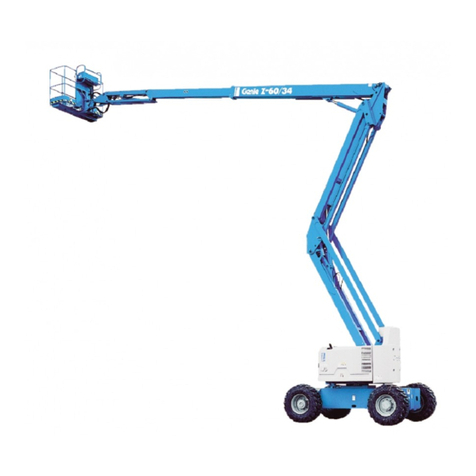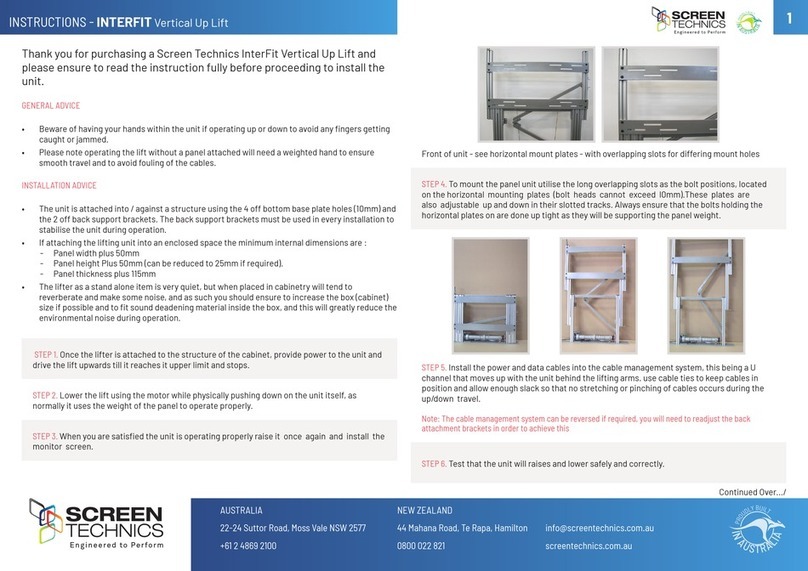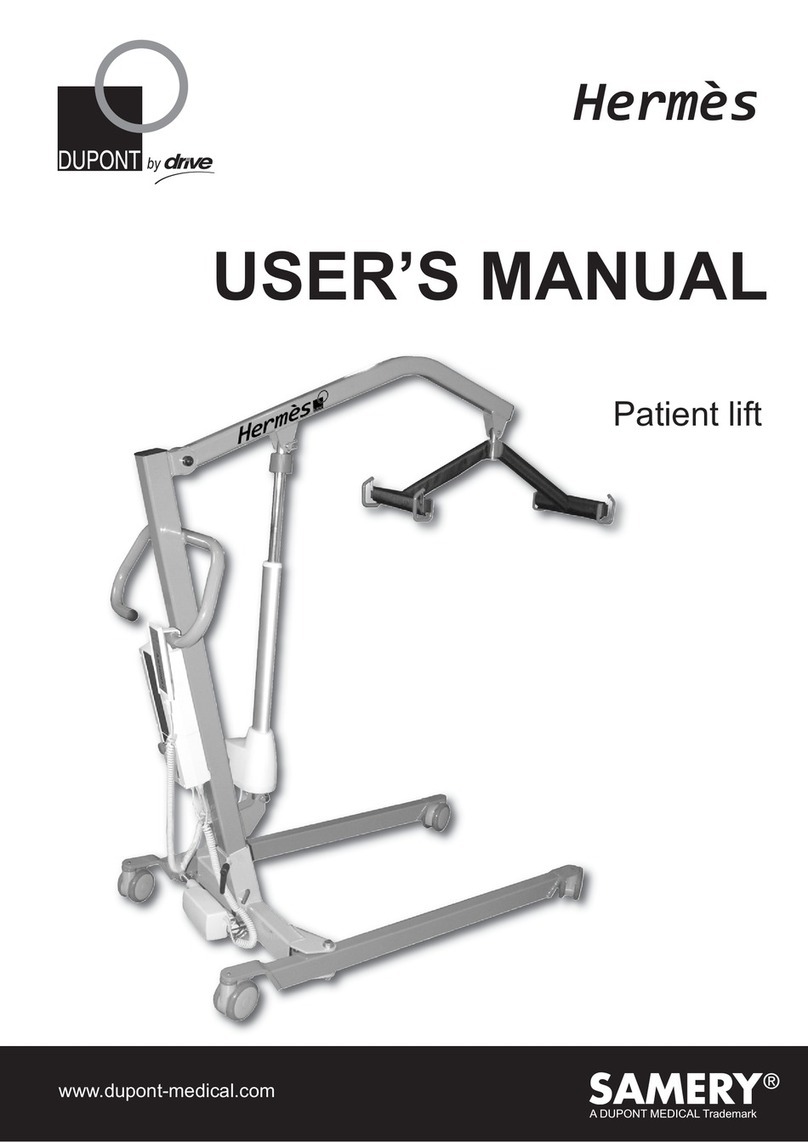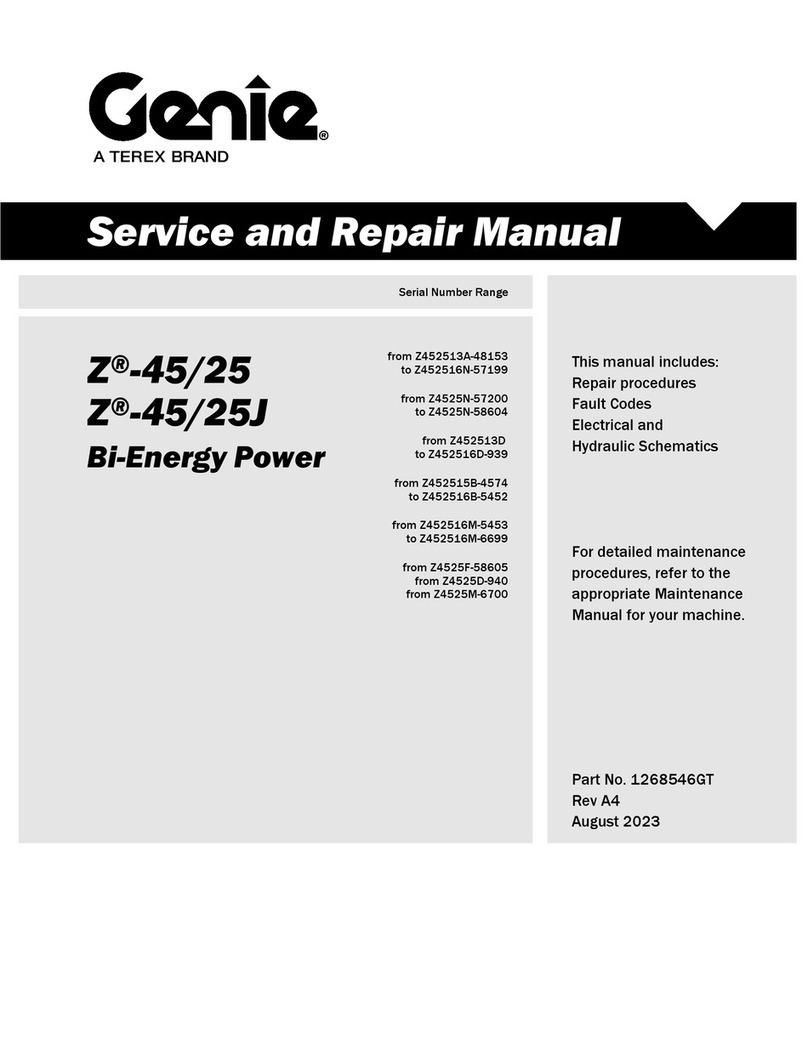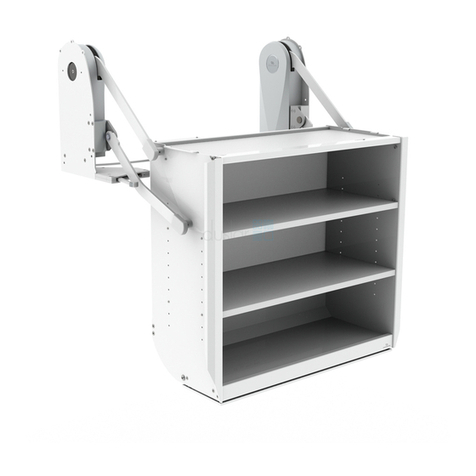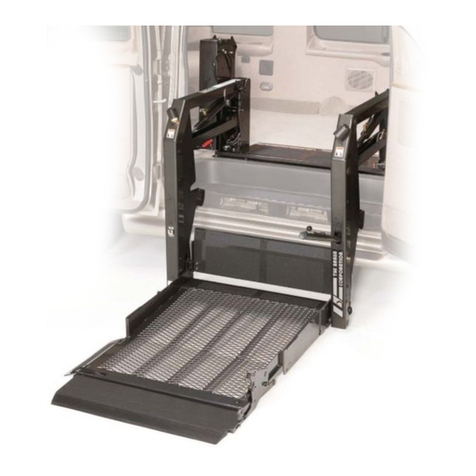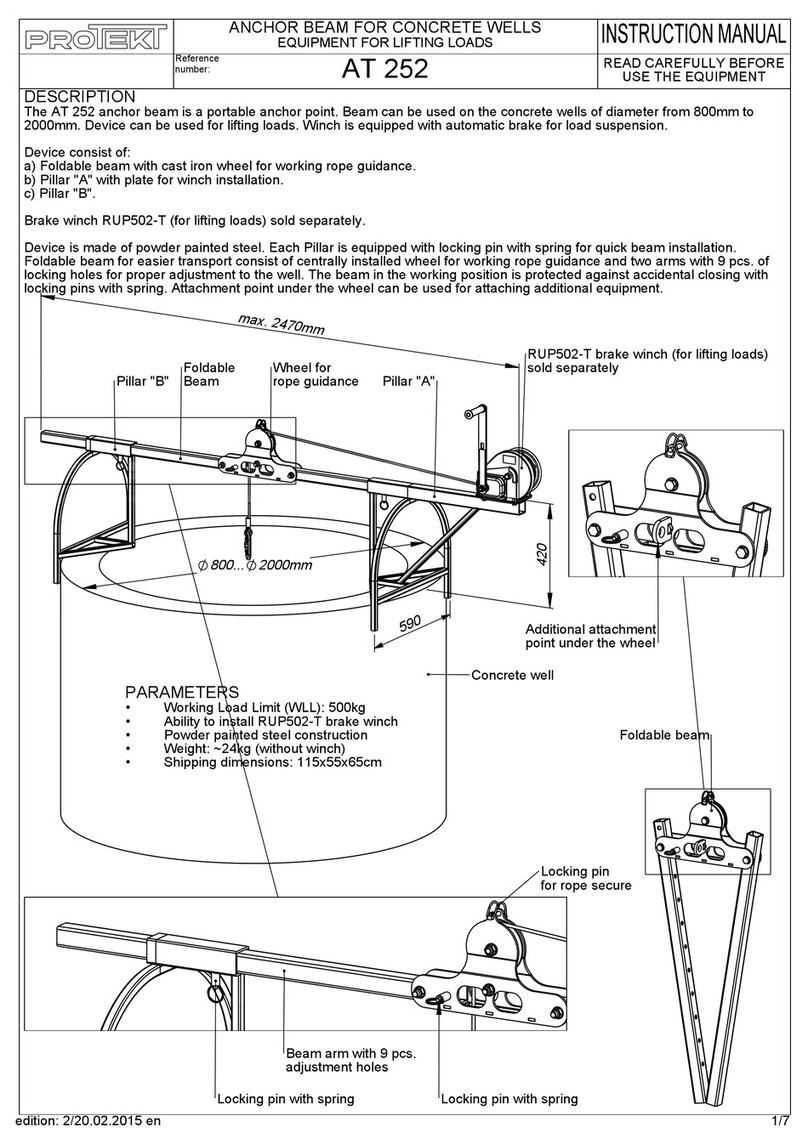
STOCKAGE
Les emballages devront toujours être stockés dans des endroits cou-
verts et protégés, à des températures comprises entre -10°C et +40°C
et à l’abri du rayonnement direct du soleil.
EMPILAGE DES COLIS
Le type d’emballage adopté permet la possibilité d’empiler en magasin
jusqu’à 8 caisses l’une sur l’autre, pourvu qu’elles soient correctement
placées et assurées contre tout risque de chute.
Dans les camions ou les conteneurs, il est possible d’empiler jusqu’à 3
caisses, pourvu qu’elles soient sanglées et assurées contre tout ri-
sque de chute.
OUVERTURE DES COLIS
A la réception, s’assurer que le matériel n’ait subit aucune avarie durant
le transport et que tous les éléments indiqués sur le bordereau de coli-
sage soient présents.
Les caisses devront être ouvertes en prenant toutes précautions afin d’éviter
d’endommager leur contenu (éviter de faire tomber des éléments de
l’élévateur en ouvrant la caisse).
ÉLIMINATION DE L’EMBALLAGE
Le bois de la caisse peut être réutilisé ou recyclé.
INTRODUCTION
IATTENTION
Ce manuel a été rédigé pour le personnel d’atelier affecté à l’utilisation
de l’élévateur (opérateur) et pour l’agent affecté à l’entretien courant,
par conséquent, avant d’effectuer quelque opération que ce soit sur
l’élévateur et/ou sur son emballage, il est nécessaire de lire attentive-
ment tout le manuel, car celui-ci contient des informations importantes
pour:
- LA SÉCURITÉ DES PERSONNES affectées à l’utilisation et à
l’entretien courant,
- LA SÉCURITÉ DE L’ÉLÉVATEUR,
- LA SÉCURITÉ DES VÉHICULES soulevés.
CONSERVATION DU MANUEL
Ce manuel fait intégralement partie de l’élévateur et doit toujours
l’accompagner, même en cas de revente.
Il devra toujours être conservé à proximité de l’élévateur, dans un en-
droit facilement accessible.
A tout moment, l’opérateur et l’agent d’entretien devront pouvoir y avoir
recours rapidement.
EN PARTICULIER, IL EST RECOMMANDÉ UNE LECTURE ATTENTIVE
ET RÉPÉTÉE DU CHAPITRE 3, QUI CONTIENT D’IMPORTANTES
INFORMATIONS ET DES CONSIGNES DE SÉCURITÉ.
L’élévateur a été conçu et construit en respect des dispositions suivantes:
LAGERUNG
Das Verpackungsmaterial muß immer in überdachten Räumen bei einer zwi-
schen -10°C und +40°C liegenden Temperatur gelagert werden. Das Ver-
packungsmaterial darf nicht dem direkten Sonnenlicht ausgesetzt werden.
STAPELN DER PAKETE
Das vorgesehene Verpackungsmaterial sieht die Möglichkeit vor, im
Speicher bis zu 8 Kisten übereinander zu stapeln. In diesem Fall sind
die Kisten mit Gurten gegen ein Umstürzen abzusichern.
Auf LKW’s oder in Containern können bis zu drei Kisten aufeinanderge-
stellt werden. In diesem Fall sind die Kisten mit Bandeisen gegen
ein Umstürzen abzusichern.
ÖFFNEN DER KISTEN
Bei der Ankuft der Kisten ist zu kontrollieren, daß die Maschine keine Tran-
sportschäden aufweist und daß alle in den Versandunterlagen aufgeführten
Teile vorhanden sind.
Die Kisten müssen vorsichtig geöffnet werden, um Personenschäden und
eine Beschädigung der Maschinenteile zu vermeiden (aufpassen, daß keine
Teile aus der Kiste auf den Boden fallen).
ENTSORGUNG DES VERPACKUNGSMATERIALS
Das Kistenholz kann wiederverwendet werden und ist recyclefähig.
EINLEITUNG
IACHTUNG
Dieses Handbuch wurde für das mit der Bedienung der Hebebühne be-
auftragte Werkstattpersonal (Bediener) und für den mit der Wartung
beauftragten Techniker verfaßt. Daher ist vor jedem Eingriff an der He-
bebühne oder an dem Verpackungsmaterial aufmerksam dieses Han-
dbuch zu lesen, denn dieses enthält wichtige Informationen für:
- die Sicherheit der mit der BEDIENUNG UND DER WARTUNG bea-
uftragten Personen
- DIE SICHERHEIT DER HEBEBÜHNE
- DIE SICHERHEIT DER GEHOBENEN FAHRZEUGE
AUFBEWAHRUNG DES HANDBUCHES
Das Handbuch stellt ein Teil der Hebebühne dar und muß diese immer
begleiten, auch wenn die Hebebühne verkauft wird.
Das Handbuch muß immer an einem leicht zugänglichen Ort in der Nähe der
Hebebühne aufbewahrt werden.
Der Bediener und die mit der Wartung beauftragte Person müssen das Han-
dbuch jederzeit zur Verfügung haben.
INSBESONDERE WIRD EMPFOHLEN, DAS KAPITEL 3 WIEDERHOLT
ZU LESEN, DENN DIESES KAPITEL ENTHÄLT WICHTIGE
INFORMATIONEN UND HINWEISE BEZÜGLICH DER SICHERHEIT.
Die Hebebühne wurde unter Beachtung folgender Vorschriften hergestellt:
ALMACENAJE
Las jaulas deben conservarse siempre en lugares cubiertos y protegi-
dos, a una temperatura comprendida entre -10°C y +40°C, y no deben
exponerse directamente a los rayos del sol.
APILAMIENTO DE BULTOS.
El tipo de embalaje prevé la posibilidad de apilar en almacén hasta 8
jaulas una sobre otra, a condición de que estén correctamente coloca-
das y aseguradas contra la caida.
En los camiones o en los contenedores se pueden apilar hasta 3 jau-
las, a condición de que se mantegan bien y aseguradas contra la
caída.
APERTURA DE LOS EMBALAJES.
A la llegada verificar que la máquina no haya sufrido daños durante el
transporte y que estén todas las piezas indicadas en la lista de envío.
La jaula debe ser abierta adoptando todas las precauciones para evitar
daños a las piezas de la máquina (evitar que se caigan piezas de la ja-
ula durante la apertura).
ELIMINACIÓN DEL EMBALAJE.
La madera de la Jaula puede ser reutilizada o reciclada.
INTRODUCCIÓN
IATENCIÓN
Este manual ha sido escrito por el personal de taller que se ocupa
del uso del elevador (operario) y por el técnico que se ocupa del
mantenimiento normal (servicio) por tanto, antes de realizar cual-
quier operación en el elevador y/o en su embalaje, es preciso leer
atentamente todo el manual, ya que contiene informaciones impor-
tantes para:
- LA SEGURIDAD DE LAS PERSONAS que se ocupan del uso y del
mantenimiento normales,
- LA SEGURIDAD DEL ELEVADOR,
- LA SEGURIDAD DE LOS VEHÍCULOS elevados.
CONSERVACIÓN DEL MANUAL
El manual es parte integrante del elevador y debe acompañarlo
siempre, aún en caso de venta.
Deberá estar cerca del elevador, en lugar fácilmente accesible.
El operario y el personal de servicio lo deberá hallar rápidamente para
consultar en cualquier momento.
SE RECOMIENDA, PARTICULARMENTE, UNA LECTURA ATENTA Y
REPETIDA DEL CAPÍTULO 3, QUE CONTIENE IMPORTANTES
INFORMACIONES Y AVISOS RELATIVOS A LA SEGURIDAD.
El elevador ha sido proyectado y fabricado respetando las siguientes:
7
